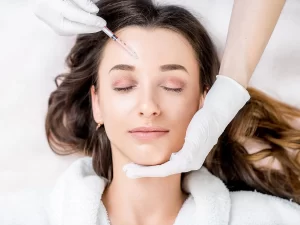Common Indicators You Should Visit a Specialist for Bunion Treatment

A bunion is a lump outside the big toe caused by years of pressure on the big toe joint (the metatarsophalangeal, or MTP, joint). Bunions can be managed surgically or with various treatments from your Sports Medicine Associates of San Antonio podiatrist, but there are a few symptoms to check for. If you observe any of the following bunion symptoms, it is time to schedule an appointment:
1.You detect a noticeable bulge on or around your big toe’s joint.
2.Moving your toes or feet is becoming more difficult.
3.Your foot discomfort makes it difficult for you to do daily tasks.
4.It is challenging to find shoes that fit around your bunion.
Causes of bunions
Bunions’ actual cause is unclear; however, there are various hypotheses. Based on your foot form, some specialists believe bunions are hereditary (given down through DNA). Another notion states that tight-fitting or narrow shoes pull your toes into an uncomfortable posture, putting additional strain on your joints. It’s also probable that those with inflammatory illnesses, like rheumatoid arthritis, are more prone to bunions.
Moreover, certain occupations might increase your risk of acquiring foot disorders such as bunions. For example, nurses, instructors, waitresses, ballet dancers, and others who stand much of the day place extra strain on their feet.
Can you reverse bunions?
You cannot reverse bunions, and they do not go away on their own. A bunion will likely continue to develop over time. Fortunately, many people do not require surgery to correct their bunions since pain can be relieved with home remedies, orthotics, and other therapies.
How to prevent bunions
Appropriately fitted footwear is vital for avoiding bunions or keeping an existing bunion from worsening. Your healthcare practitioner can advise you on how to choose the proper shoes. Generally, shoes with a wide-toe box and soft bottoms are preferable.
Shoes that are narrow and pointed at the tip and high heels that create pressure on the front of the foot should be avoided. Custom-fitted orthotics can also help prevent or reduce the onset of bunions if you have flatfeet or another hereditary structural foot condition.
The outlook for those living with bunions
Bunions can worsen over time if not treated properly, such as by altering your footwear or utilizing orthotics. If you have extreme discomfort when walking or standing, you may become sedentary (inactive), which harms your health and quality of life. Most patients obtain symptom alleviation through over-the-counter medications or medical therapies. Also, if surgery is required, it can be beneficial.
If you want to keep your bunions from growing worse or avoid them entirely, one of the greatest places to start is with a nice pair of shoes. The appropriate shoes can keep your feet active and protect them from unpleasant foot issues like bunions.
Rest, exercise and extra care can also help keep your feet healthy. However, if you’re already detecting changes or pain around your big toe joint, see a podiatrist for a formal diagnosis and treatment plan. Call Marque Allen, DPM, FACFAS, or book your consultation online to determine which bunion therapies are best for you.






